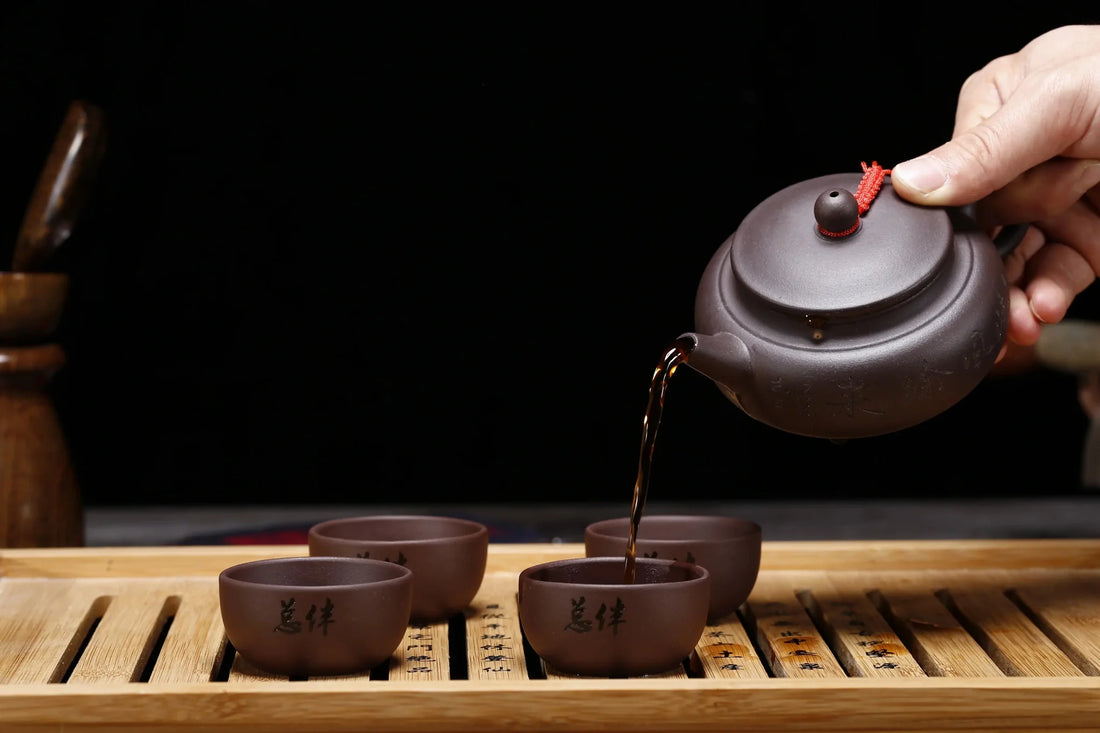
Brewing Old Tea Cakes: Mastering 10+ Year Aged Compressed Teas
Abstract
This guide focuses on brewing techniques for old tea cakes (aged 10+ years), addressing their unique challenges—like dense compression and slow flavor release. Learn why extra washing, higher temperatures, and shorter initial steeps are critical to unlocking their rich, mellow character.
Key Takeaways:
1. Old tea cakes (10+ years) require more washing (2-3 times) to remove dust and awaken tightly compressed leaves.
2. Use boiling water (100°C) exclusively—high heat penetrates dense, aged structures to release deep, evolved flavors.
3. Start with short steeps (5-10 seconds) to avoid underwhelming or bitter results; gradually extend times as you go.
4. Prying large, intact flakes (not crumbs) ensures even extraction across multiple infusions.
1. Why Old Tea Cakes Need Special Treatment
Old tea cakes (aged 10+ years, e.g., vintage Pu’er or aged Fuzhuan) differ drastically from new ones, demanding adjusted methods:
5. Denser compression: Years of aging tighten their structure, making it harder for water to penetrate—risking weak, flat liquor without proper techniques.
6. Evolved compounds: Bitterness fades over time, replaced by smoother notes (wood, medicine, dried fruit), but these release more slowly than fresh tea’s bold flavors.
7. Residual dust/odors: Long-term storage may leave surface dust or subtle "storage aromas"—requiring thorough pre-brewing cleaning.
2. Step-by-Step Brewing for Old Tea Cakes
Step 1: Prying—Preserve Intact Flakes
Old tea cakes are brittle yet tightly packed; poor prying leads to uneven brewing:
8. Tools: Use a wide-blade tea knife (≥2mm thick) or horn needle (sturdy enough to avoid breaking). Avoid thin needles—they crush leaves into dust.
9. Technique:
1. Inspect for natural cracks (old cakes often develop tiny seams from aging).
2. Insert the tool 1-2cm into a seam, then gently lift (lever action, not force) to prize off large, flaky pieces.
3. Aim for 5-7g (slightly more than new tea, as old cakes release flavor slowly).
Step 2: Washing—Clean and Awaken
Old tea needs extra washing to remove residues and loosen its structure:
10. Number of washes: 2-3 times (vs. 1-2 for new cakes):
1. 1st wash: Pour boiling water over the tea, drain after 10 seconds (removes surface dust).
2. 2nd wash: Boiling water again, steep 15-20 seconds (penetrates deeper into compressed flakes).
3. 3rd wash (if needed): For cakes with strong storage aromas, steep 20 seconds—helps dissipate stale notes.
11. Critical step: "Awakening"
After the final wash, leave water in the vessel for 30-60 seconds (cover with lid) to soften the tea’s dense structure. Drain completely before brewing.
Step 3: Water Temperature—Boiling Only
12. Must-use: 100°C (212°F) boiling water.
13. Why: Lower temps (≤95°C) can’t breach the old cake’s tight fibers, leaving flavors trapped. Boiling water forces open pores to release aged notes (e.g., aged fragrance).
14. Tool hack: Use a clay teapot or stainless steel kettle to maintain boiling temp—avoid glass (loses heat quickly).
Step 4: Steeping Times—Short Starts, Slow Extensions
Old tea unfolds gradually; rush it, and you’ll miss its layers:
|
Infusion Range |
Steep Time |
Goal |
|
1-3 |
5-10 seconds |
Wake the tea; avoid under/over-extraction. |
|
4-8 |
10-20 seconds |
Highlight peak flavors (smooth, aromatic). |
|
9+ |
20-40 seconds |
Extract lingering sweetness; extend as needed. |
3. Fixing "Weak Flavor"—Troubleshooting Tips
If your old tea tastes flat, try these adjustments:
15. Boost temperature: Ensure water is actively boiling (not just hot). Old cakes need maximum heat to break down aged fibers.
16. Adjust prying: If you’re using crumbs, switch to larger flakes—small pieces over-extract, while big chunks stay underwhelming.
17. Add a wash: If flavor is muted after 3 infusions, do a quick 10-second wash with boiling water to reawaken the tea.
4. Tea-Specific Adjustments
Tweak methods based on the type of old tea cake:
18. Vintage Raw Pu’er (10+ years):
1. Less washing (2 times max) to preserve delicate aged fragrance.
2. Shorter initial steeps (5 seconds) to avoid bitterness from residual compounds.
19. Aged Ripe Pu’er (10+ years):
1. 3 washes to dissipate any lingering "fermentation smell."
2. Longer awakening (60 seconds) after washing—its dense structure needs extra softening.
20. Old Fuzhuan (5+ years):
1. Focus on high heat (100°C) to release microbial aroma from "golden flowers."
2. Steep 15 seconds for infusions 1-3—lets earthy notes develop fully.
5. Common Mistakes to Avoid
21. Using cool water: 90-95°C water can’t penetrate old, tight cakes—resulting in weak, watery liquor.
22. Over-steeping early: Long first steeps (>15 seconds) pull out harsh residues, masking the tea’s mellow character.
23. Skipping the "awakening" step: Rushing past the post-wash soak leaves the tea too tight to release flavor.
Final Tip: Patience Pays Off
Old tea cakes reward slow, intentional brewing. Let each infusion unfold—note how the flavor shifts from subtle to rich, then lingers softly. With the right heat, timing, and care, you’ll unlock decades of aging: a symphony of smoothness, depth, and history in every cup.
